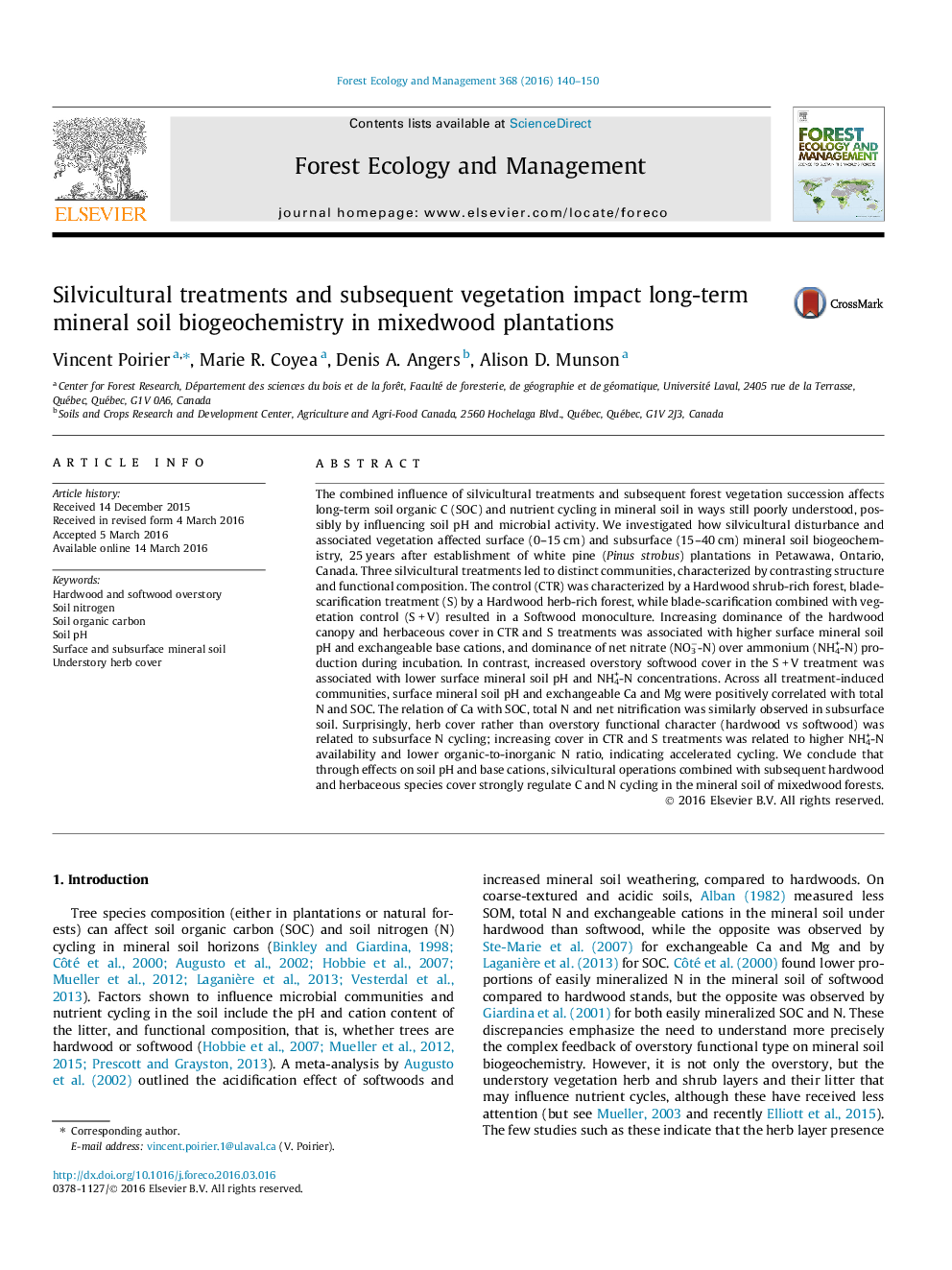| کد مقاله | کد نشریه | سال انتشار | مقاله انگلیسی | نسخه تمام متن |
|---|---|---|---|---|
| 85959 | 159153 | 2016 | 11 صفحه PDF | دانلود رایگان |
• Silvicultural treatments oriented vegetation after 25 years in Petawawa, Canada.
• Surface and subsurface (0–15 and 15–40 cm depths) mineral soil layers were analyzed.
• The control was characterized by a Hardwood shrub-rich vegetation type.
• Soil pH, C and N cycling were greater in Hardwood herb-rich, blade-scarified sites.
• Scarification and herbicide promoted Softwoods, decreasing soil pH and N cycling.
The combined influence of silvicultural treatments and subsequent forest vegetation succession affects long-term soil organic C (SOC) and nutrient cycling in mineral soil in ways still poorly understood, possibly by influencing soil pH and microbial activity. We investigated how silvicultural disturbance and associated vegetation affected surface (0–15 cm) and subsurface (15–40 cm) mineral soil biogeochemistry, 25 years after establishment of white pine (Pinus strobus) plantations in Petawawa, Ontario, Canada. Three silvicultural treatments led to distinct communities, characterized by contrasting structure and functional composition. The control (CTR) was characterized by a Hardwood shrub-rich forest, blade-scarification treatment (S) by a Hardwood herb-rich forest, while blade-scarification combined with vegetation control (S + V) resulted in a Softwood monoculture. Increasing dominance of the hardwood canopy and herbaceous cover in CTR and S treatments was associated with higher surface mineral soil pH and exchangeable base cations, and dominance of net nitrate (NO3−-N) over ammonium (NH4+-N) production during incubation. In contrast, increased overstory softwood cover in the S + V treatment was associated with lower surface mineral soil pH and NH4+-N concentrations. Across all treatment-induced communities, surface mineral soil pH and exchangeable Ca and Mg were positively correlated with total N and SOC. The relation of Ca with SOC, total N and net nitrification was similarly observed in subsurface soil. Surprisingly, herb cover rather than overstory functional character (hardwood vs softwood) was related to subsurface N cycling; increasing cover in CTR and S treatments was related to higher NH4+-N availability and lower organic-to-inorganic N ratio, indicating accelerated cycling. We conclude that through effects on soil pH and base cations, silvicultural operations combined with subsequent hardwood and herbaceous species cover strongly regulate C and N cycling in the mineral soil of mixedwood forests.
Journal: Forest Ecology and Management - Volume 368, 15 May 2016, Pages 140–150
